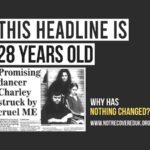Labour has called an investigation into government education spending “a humiliating rebuke for Tory ministers”. Despite Conservative claims to defend its “record on state school spending”, it has been using misleading statistics. Because the figures include “billions” spent on university tuition fees. They also include money spent by parents on private education. The Department for Education (DfE) is now due for investigation by the UK’s statistics watchdog.
“Blatantly false”
On 8 October, Sir David Norgrove – chair of the UK Statistics Authority – wrote to secretary of state for education Damian Hinds with “serious concerns” about the DfE’s “presentation and use of statistics”, stating that “spending figures were exaggerated”.
In response, Labour’s shadow secretary of state for education Angela Rayner called this “a humiliating rebuke”, because government claims were “wildly misleading or blatantly false”. She stated:
They have used misleading figures on school funding to hide the fact that they have cut billions of pounds from school budgets, leaving head-teachers forced to beg for donations from parents to pay for books and stationary.
Cover up
As The Canary previously reported, the DfE claims that UK education spending is world-leading. Minister for school standards Nick Gibb said:
We are spending record amounts on our school funding. We are the third highest spender on education in the OECD [Organisation for Economic Co-operation and Development].
But according to the BBC, this figure is based on “the proportion of gross domestic product (GDP), the value of goods and services produced, spent on all educational institutions, including universities as well as schools”. And this is a figure for 2015, not 2018. It also emerged that the DfE counts billions of pounds that students pay on tuition fees to make these claims; and that it includes “the fees paid by parents in the independent school sector” too.
Cuts
This news comes as state schools face a funding crisis.
Schools still need to find an extra £3bn of savings by 2019/20. And according to the School Cuts website, primary schools face an average cut of £45,400, which rises to £185,200 for secondary schools.
Ongoing education cuts mean that some schools can only afford to open for four and a half days per week. Because as one headteacher explained, “a shorter week was the only way to save £35,000 – the equivalent of a teacher’s salary”.
Schools also need to fund 1% of the recent teachers’ pay award. But some schools don’t have the money to do this. As Paul Whiteman, the general secretary of the National Association for Head Teachers, told Tes:
Many struggling schools will have to make heartbreaking decisions to find the 1 per cent, forced into an impossible choice between paying their staff the amounts recommended and making yet more damaging cuts in the middle of a recruitment and retention crisis.
In 2018, fully qualified teachers in state schools start on a salary of £23,720, rising to £35,008 on the main scale. For many years, meanwhile, private school fees have been “higher than [the] average salary”. A school year at Eton, for example, costs £40,668 for one child.
Featured image via Pixabay















